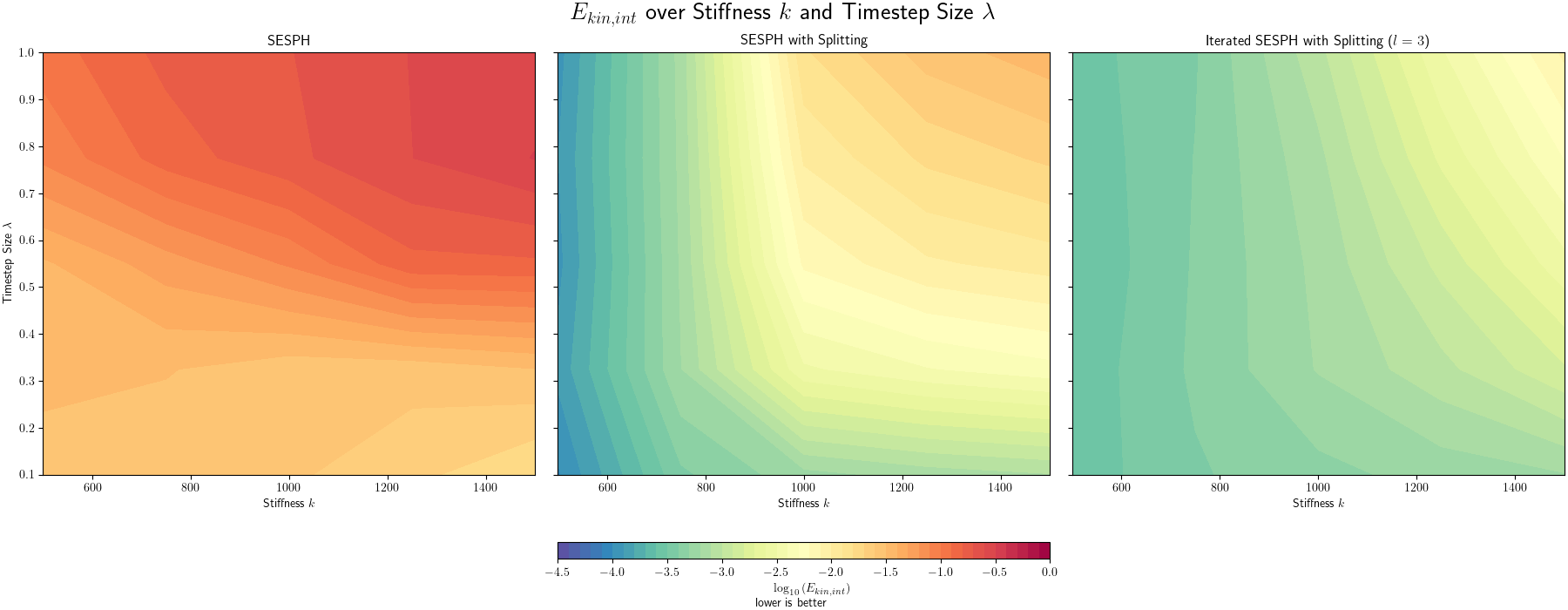Setting
- let \(N=1591, h=0.02, \nu_2 = 0\)
-
water height: \(2.96m\)
-

Oscillation Frequency over Stiffness
- fixed \(\Delta t=\frac{1}{5000}\)
- time interval \(2s \le t \le 12s\)
- the signal is \(f(t) = \rho_{avg}(t) - \rho_0\), which measures compression
- use Fourier analysis to find:
- peak frequency of the oscillation
- zero frequency (total density error)
Results:
Total density error as a function of \(k\):
Oscillation peak frequency as a function of \(k\):
Interpretation:
- viscosity doesn’t change the frequency or total error in this setting
- error decreases exponentially with \(k\) (?)
- oscillation frequency increases with \(k\)
- possible explanation: \(f \propto c\) since the oscillations move at the speed of sound \(c\)
- Newton–Laplace equation: \(c = \sqrt{\left(\frac{\partial P}{\partial \rho}\right)}= \sqrt{\frac{k}{\rho}}\)
- explains \(\sqrt{x}\)-shaped curve
Stability over Viscosity, Stiffness and Timestep Size
- time interval: \(10s \le t \le 20s\)
- time integral of kinetic energy (less is better):
- \[E_{kin, int} = \int_{10s}^{20s} \frac{1}{N}\sum_{i=1}^N \frac{1}{2} m_i (\vec{v}_i \cdot \vec{v}_i) \, dt\]
- peak average kinetic energy (less is better):
- \[E_{kin, peak} = \max_{10s \le t \le 20s} \frac{1}{N}\sum_{i=1}^N \frac{1}{2} m_i \left(\vec{v}_i(t) \cdot \vec{v}_i(t)\right) \, dt\]
Fixed Timestep
- set \(\lambda = 0.1\)
- \(k\) on the x-axis, \(\nu\) on the y-axis
$$E_{kin, int}$$
$$E_{kin, peak}$$
Fixed Viscosity
- set \(\nu = 0.0001\)
- \(k\) on the x-axis, \(\nu\) on the y-axis
Results for Improved Pressure Solvers:
- new solvers help reduce error in this setting by orders of magnitude!
Video of increased stability:
- \[\nu=0.0001,\nu_2=0, \lambda = 0.1, k=1000\]
- from left to right: SESPH, SESPH with splitting, iterated SESPH with splitting
